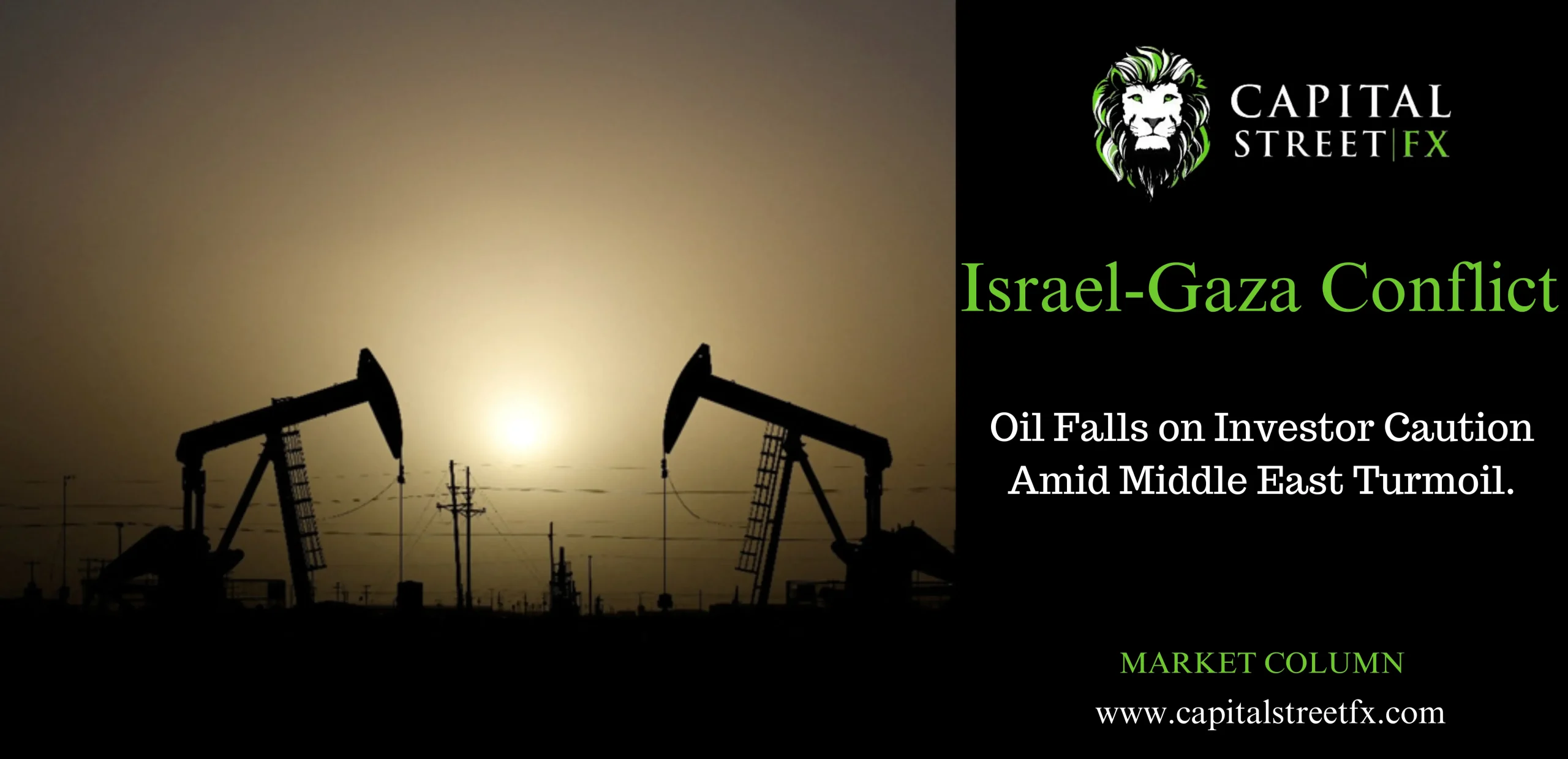Oil Falls on Investor Caution Amid Middle East Turmoil.
In the ever-volatile world of oil markets, a sudden shift in sentiment can send shockwaves throughout the global economy. Such was the case on a fateful Tuesday when oil prices, having risen more than 4% the previous day, took an unexpected nosedive. This abrupt reversal in fortune left traders and investors on edge, with their gaze firmly fixed on the tumultuous Middle East, where geopolitical tensions have once again taken center stage.
The Initial Surge and Subsequent Retreat
The day began with optimism as oil prices surged, seemingly defying gravity. Brent crude, the international benchmark, had soared, reaching $87.79 per barrel by 08:05 GMT. Its American counterpart, WTI crude, was not far behind, standing at $86.03 per barrel. However, this initial bullish run was short-lived, as both benchmarks experienced a sudden reversal.
In the preceding trading session, these oil giants had lost over $1 each, only to partially recover. The question on everyone’s mind was whether this volatility was merely a blip on the radar or the harbinger of something more profound.
The Middle East: A Powder Keg of Tensions
The primary catalyst behind this rollercoaster ride in oil prices was the ongoing hostilities between Israel and the Palestinian Islamist organization, Hamas. Over the weekend, tensions had escalated dramatically when Hamas launched a major military offensive against Israel, the likes of which hadn’t been seen in decades.
The situation intensified further on Monday night, as Israel responded with a barrage of airstrikes on Gaza. This aggressive exchange of fire sent shockwaves through global markets, particularly the oil sector.
Uncertainty and the Risk Premium
As the sun rose on Tuesday, uncertainty loomed large across global markets. ING analysts noted, “There is still plenty of uncertainty across markets following the attacks in Israel over the weekend.” This uncertainty, coupled with the ongoing violence, has led to oil prices already factoring in a risk premium.
Furthermore, experts warned that prices could see an even more significant uptick if reports of Iran’s involvement in the conflict prove to be accurate. The specter of the United States enforcing oil sanctions against Iran more aggressively is a grim prospect for global oil markets, which are already grappling with supply constraints.
The Vulnerability of Middle East Supplies
Although Israel’s contribution to global crude oil production is relatively small, the fear is that an escalation of the conflict could disrupt Middle East supplies. This disruption could exacerbate an anticipated deficit in oil supply for the remainder of the year, sending prices spiraling even higher.
Reports emerged that the Ashkelon oil facility and port in Israel had been closed due to the ongoing hostilities, further stoking concerns about potential supply interruptions in the region.
The Iranian Conundrum
While the United States has not provided any concrete intelligence or proof implicating Iran directly in the attacks, there are claims of Iranian complicity. A White House official made this assertion on Monday, adding a layer of complexity to an already fraught situation.
An improvement in negotiations between Venezuela and the U.S. could provide some relief. These negotiations may lead to the easing of sanctions on Caracas, potentially allowing at least one more foreign oil company to purchase Venezuelan crude oil under certain restrictions.
Conclusion
The rollercoaster ride of oil prices serves as a stark reminder of the sector’s vulnerability to geopolitical events. The turmoil in the Middle East has once again demonstrated how fragile global oil markets can be. As investors and traders remain on high alert, the world watches and waits, acutely aware of the potential consequences for both oil prices and the broader global economy.

